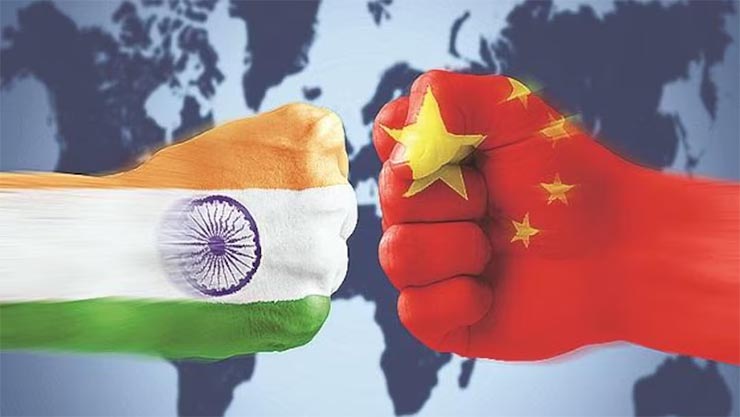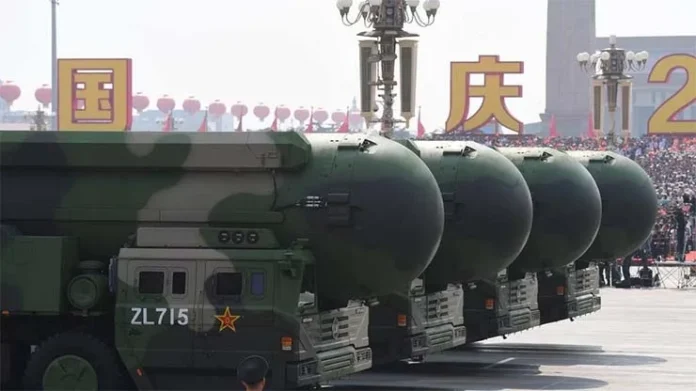
Historical grievances stemming from the 1962 Sino-Indian War continue to influence the geopolitical dynamics between India and China. The Doklam standoff in 2017 was a significant military confrontation that underscored the volatility of India-China border disputes. The standoff occurred at the tri-junction of India, China, and Bhutan, where Chinese troops attempted to extend a road into Bhutanese territory, which India perceived as a strategic threat. The 73-day standoff saw both nations deploying troops and equipment, bringing them to the brink of conflict. The resolution of the standoff through diplomatic channels highlighted the importance of maintaining communication and the potential for rapid escalation.
The Galwan Valley clash in June 2020 was the most violent confrontation between Indian and Chinese forces in over four decades. The clash resulted in the deaths of 20 Indian soldiers and an undisclosed number of Chinese troops. This incident not only escalated military tensions but also had significant political and economic repercussions. The clash underscored the fragility of the Line of actual Control (LAC) and the potential for minor incidents to escalate into major confrontations. It also highlighted the need for robust mechanisms to manage border tensions and prevent such incidents.
Economic competition between India and China is another critical aspect of their strategic rivalry. China is India’s largest trading partner, but the trade relationship is heavily skewed in China’s favour, leading to significant trade imbalances. In 2020, India’s trade deficit with China was over $48 billion, reflecting its dependence on Chinese imports for various sectors, including electronics, pharmaceuticals, and machinery.
India has been trying to address this imbalance by promoting domestic manufacturing under the “Make in India” initiative and imposing restrictions on certain Chinese imports. However, reducing economic dependence on China remains a challenging task. The Belt and Road Initiative (BRI) further complicates economic dynamics, as China’s investments in infrastructure projects across South Asia and beyond seek to create economic dependencies and expand its influence.
The Sino-Indian War of 1962 remains an uneasy factor in India-China relations, fuelling ongoing tensions and shaping contemporary geopolitical strategies. Both nations are locked in a rivalry marked by military confrontations, economic competition, and strategic territorial disputes
China’s expanding influence in South Asia and IOR poses a strategic challenge to India’s regional dominance. China has invested heavily in infrastructure projects under the BRI, extending its reach into countries like Pakistan, Sri Lanka, Bangladesh, and Nepal. The China-Pakistan Economic Corridor (CPEC), a flagship BRI project, runs through the disputed territory of Gilgit-Baltistan, exacerbating India’s security concerns. China’s presence in the Indian Ocean has grown through the establishment of naval bases and port facilities, such as in Djibouti and Gwadar. These developments threaten India’s strategic interests and its traditional sphere of influence. In response, India has sought to strengthen its naval capabilities and enhance strategic partnerships with countries like the United States, Japan, and Australia through initiatives like the Quadrilateral Security Dialogue (QUAD).
Chinese companies, such as Huawei and ZTE, have been at the forefront of 5G technology development, raising concerns about data security and potential espionage. Cybersecurity threats from China have also been a growing concern. There have been numerous instances of cyber-attacks attributed to Chinese state-sponsored actors targeting Indian government and private sector networks. These cyber-attacks aim to steal sensitive information, disrupt critical infrastructure, and undermine India’s technological sovereignty. Strengthening cybersecurity measures and reducing dependence on Chinese technology are crucial steps for India to mitigate these threats.
China’s diplomatic influence and soft power initiatives pose additional challenges for India. China has effectively used economic investments, cultural diplomacy, and strategic partnerships to expand its influence in the global arena. Institutions like the Asian Infrastructure Investment Bank (AIIB) and initiatives like the Confucius Institutes promote China’s economic and cultural influence. China’s strategic partnerships with countries like Pakistan and its increasing involvement in regional organisations, such as the Shanghai Cooperation Organisation (SCO), challenge India’s diplomatic efforts. Moreover, China’s permanent membership in the United Nations Security Council (UNSC) allows it to wield significant influence over international diplomatic decisions, often countering India’s interests.
The Doklam standoff in 2017 and the Galwan Valley clash in 2020 underscored the volatility of India-China border disputes. These incidents highlight the fragility of the LAC and emphasise the need for robust mechanisms to manage tensions and prevent escalation
INDIA’S CURRENT STRATEGY
India has been investing heavily in modernising its army, navy, and air force. This includes acquiring advanced fighter jets like the Rafale, enhancing missile capabilities with systems like the Agni-V and BrahMos, and upgrading infantry weapons and armoured vehicles. The Indian Navy is also expanding its fleet with new submarines, aircraft carriers, and destroyers to enhance its maritime capabilities. India has accelerated the development of infrastructure along the LAC to improve troop mobility and logistics. Projects include the construction of all-weather roads, bridges, and advanced surveillance systems to monitor Chinese movements. The establishment of the Defence Space Agency and Defence Cyber Agency marks significant steps towards enhancing India’s strategic capabilities in space and cyber domains. The successful anti-satellite (ASAT) missile test in 2019 demonstrated India’s growing prowess in space warfare.
India’s “Make in India” initiative aims to boost domestic manufacturing and reduce reliance on foreign imports, particularly from China. Furthermore, India is working on diversifying its trade partnerships to reduce economic dependency on China. This includes enhancing trade relations with countries like the United States, Japan, Australia, and the European Union. India’s decision to opt out of the Regional Comprehensive Economic Partnership (RCEP) was driven by concerns over China’s dominant role in the agreement. Also, significant investments are being made in infrastructure development to support economic growth and make India an attractive destination for global businesses. Initiatives such as the Bharatmala and Sagarmala projects aim to improve road connectivity and port infrastructure, respectively.
Diplomacy plays a critical role in India’s strategy to counter China’s regional and global influence. India has been actively engaging in diplomatic initiatives and strengthening alliances to build a network of like-minded countries. India’s “Act East” policy aims to enhance economic and strategic relations with Southeast Asian countries. This policy seeks to counterbalance China’s influence in the region through increased economic cooperation, cultural ties, and strategic partnerships. The QUAD is a strategic forum aimed at ensuring a free and open Indo-Pacific. The QUAD nations collaborate on various issues, including maritime security, counterterrorism, and infrastructure development, to counter China’s assertive policies in the region. India has been strengthening bilateral ties with key global players. The strategic partnership with the United States has been particularly significant, encompassing defence cooperation, intelligence sharing, and joint military exercises. Similarly, India has deepened its ties with Japan, France, and Russia to diversify its strategic options.
Technological innovation and robust cybersecurity measures are essential components of India’s strategy to safeguard its interests against China’s technological advancements. India is investing in research and development to enhance its technological capabilities. This includes developing indigenous defence technologies, such as the Tejas fighter aircraft and the Arjun main battle tank, and investing in emerging technologies like artificial intelligence, quantum computing, and biotechnology .Recognising the threat posed by cyber-attacks, India has been strengthening its cybersecurity infrastructure. The establishment of the National Cyber Coordination Centre (NCCC) and the Indian Cyber Crime Coordination Centre (I4C) are steps towards enhancing cyber defence capabilities. Additionally, the government is promoting public-private partnerships to develop advanced cybersecurity solutions.
Despite being major trading partners, the economic relationship between India and China is heavily skewed in China’s favour. India faces the challenge of reducing its trade deficit and economic dependence on China while competing with China’s Belt and Road Initiative (BRI) in South Asia
CHALLENGES AND MITIGATION STRATEGIES
India’s political and bureaucratic landscape presents significant challenges to the effective implementation of its strategic objectives. The complexity of the Indian political system, characterised by coalition governments and regional parties with divergent agendas, often leads to policy paralysis and inconsistent decision-making. Bureaucratic red tape and inefficiencies further impede the timely execution of defence and economic initiatives. These issues can delay critical infrastructure projects, defence procurements, and technological advancements, thereby undermining India’s strategic capabilities. Streamlining bureaucratic processes through digital governance and reducing regulatory bottlenecks can enhance efficiency. Implementing reforms such as the Goods and Services Tax (GST) and Insolvency and Bankruptcy Code (IBC) has already shown positive outcomes. Building broad-based political consensus on key national security and economic policies can ensure continuity and stability. Regular consultations with regional parties and stakeholders can help align diverse interests.
Economic constraints pose a significant challenge to India’s aspirations of countering China. High fiscal deficits, limited capital for defence and infrastructure, and dependency on foreign investments are major hurdles. The COVID-19 pandemic has further strained the economy, reducing the fiscal space available for defence modernisation and technological investments. Continuing with structural reforms to boost economic growth is crucial. Encouraging foreign direct investment (FDI), enhancing ease of doing business, and promoting domestic industries under the “Make in India” initiative can stimulate economic activity. Exploring diversified funding sources such as public-private partnerships (PPPs) for infrastructure and defence projects can alleviate financial constraints. Additionally, leveraging sovereign wealth funds and international financial institutions can provide the necessary capital.
Technological and innovation barriers hinder India’s ability to develop cutting-edge defence and civilian technologies. Despite significant progress, India still lags behind global leaders in research and development (R&D) investments, innovation ecosystems, and high-tech manufacturing capabilities. Dependence on foreign technology for critical defence equipment limits India’s strategic autonomy. Increasing public and private sector investments in R&D is essential.
To counter China’s influence, India is modernising its military, enhancing its naval capabilities, and strengthening diplomatic ties through initiatives like the QUAD. By 2047, India should achieve strategic autonomy, characterised by advanced technological capabilities, robust economic growth, and a strong defence apparatus
Diplomatic hurdles, including strained relations with neighbouring countries and complex global alliances, pose challenges to India’s strategic positioning. Balancing relationships with major powers such as the United States, Russia, and China while managing regional dynamics requires adept diplomacy. Additionally, China’s influence in international organisations and its strategic partnerships in South Asia challenge India’s diplomatic efforts. Reinforcing strategic partnerships with key global players, particularly through multilateral forums like the QUAD, can bolster India’s diplomatic leverage. Enhancing bilateral ties with countries in Southeast Asia, Africa, and Europe can also expand India’s influence. Proactively engaging with South Asian neighbours through economic aid, infrastructure projects, and cultural diplomacy can counterbalance China’s influence. Initiatives like the South Asian Association for Regional Cooperation (SAARC) and the Bay of Bengal Initiative for Multi-Sectoral Technical and Economic Cooperation (BIMSTEC) provide platforms for regional cooperation.
VISION FOR INDIA IN 2047
By 2047, India should aim to be a resilient and influential global power, characterised by robust economic growth, advanced technological capabilities, and strategic autonomy. A decisive and innovative strategy will enable India to navigate the complexities of the geopolitical landscape, counter China’s assertive policies, and protect its national interests. India’s vision for 2047 encompasses a nation that is not only self-reliant but also a key player in shaping global norms and policies. With a strong defence apparatus, a dynamic economy, cutting-edge technology, and proactive diplomacy, India can secure a future that also characterises its past achievements while charting a path of prosperity and peace for its citizens.
The journey towards 2047 presents both challenges and opportunities for India. By adopting a comprehensive and innovative strategy, India can effectively counter China’s influence and achieve its aspirations of becoming a major global power. The strategic imperatives and recommendations outlined above provide a roadmap for India to secure its future and realise its full potential on the world stage.
REFERENCES
- Bajpai, K. (2020). India Versus China: Why They Are Not Friends. Juggernaut.
- Chellaney, B. (2021). Asian Juggernaut: The Rise of China, India, and Japan. (HarperCollins India).
- Ministry of Defence, Government of India. (2021). Annual Report 2020-2021. mod.gov.in.
- Pant, H. V. (2019). New Directions in India’s Foreign Policy: Theory and Praxis. Cambridge University Press.
- Singh, S. (2022). The India-China Military Standoff: Strategic Implications and Lessons Learned. Routledge.
- Bajpai, K. (2020). India Versus China: Why They Are Not Friends. Juggernaut.
- Chellaney, B. (2021). Asian Juggernaut: The Rise of China, India, and Japan. HarperCollins India.
- Ministry of Defence, Government of India. (2021). Annual Report 2020-2021. mod.gov.in.
- Pant, H. V. (2019). New Directions in India’s Foreign Policy: Theory and Praxis. Cambridge University Press.
- Singh, S. (2022). The India-China Military Standoff: Strategic Implications and Lessons Learned. Routledge.
- Hale, W. (2022). India and China in the Indian Ocean Region: A Strategic Challenge. International Journal of Maritime Affairs and Fisheries.
- Gupta, A., & Singh, R. (2020). Innovation and R&D in India: The Path Ahead. Journal of Technology and Innovation.
- Mitra, S. (2020). India’s Bureaucratic Challenges in the 21st Century. Indian Journal of Public Administration.
- Mukherjee, R. (2021). India’s Diplomatic Strategies in the Global Arena. Foreign Affairs Review.
- Rangarajan, C., & Mahendra, D. (2021). Economic Growth and Fiscal Stability in Post-Pandemic India. Economic and Political Weekly.
-The writer is Assistant Professor, Amity Institute of Defence and Strategic Studies. The views expressed are of the writer and do not necessarily reflect the views of Raksha Anirveda
















